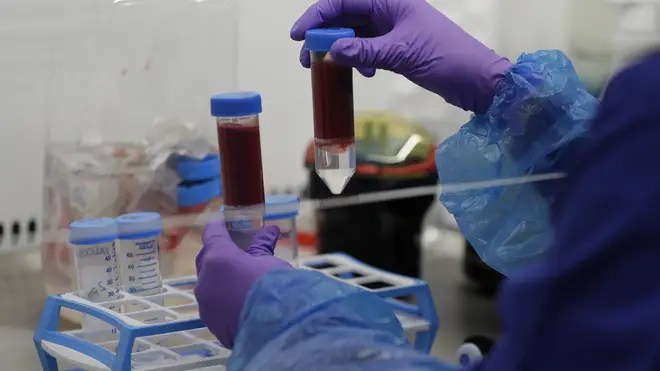
Ian Payne 4am - 7am
20 September 2021, 21:44

The 1918-19 influenza pandemic killed 50 million people globally.
Covid-19 has now killed about as many Americans as the 1918-19 Spanish flu pandemic did — approximately 675,000.
The US population a century ago was just one-third of what it is today, meaning the flu cut a much bigger, more lethal swathe through the country.
But the Covid crisis is by any measure a colossal tragedy in its own right, especially given the incredible advances in scientific knowledge since then and the failure to take maximum advantage of the vaccines available this time.
“Big pockets of American society — and, worse, their leaders — have thrown this away,” medical historian Dr Howard Markel of the University of Michigan said of the opportunity to vaccinate everyone eligible by now.
Like the Spanish flu, coronavirus may never entirely disappear. Instead, scientists hope it becomes a mild seasonal bug as human immunity strengthens through vaccination and repeated infection. That could take time.

“We hope it will be like getting a cold, but there’s no guarantee,” said Emory University biologist Rustom Antia, who suggests an optimistic scenario in which this could happen over a few years.
For now, the pandemic still has the United States and other parts of the world firmly in its jaws.
While the Delta-fuelled surge in infections may have peaked, US deaths are running at over 1,900 a day on average, the highest level since early March, and the country’s overall toll topped 675,000 on Monday, according to the count kept by Johns Hopkins University, though the real number is believed to be higher.
Winter may bring a new surge, with the University of Washington’s influential model projecting an additional 100,000 or so Americans will die of Covid-19 by January 1, which would bring the overall US toll to 776,000.
The 1918-19 influenza pandemic killed 50 million victims globally at a time when the world had one-quarter the population it does now. Global deaths from Covid-19 now stand at more than 4.6 million.
The Spanish flu’s US death toll is a rough guess, given the incomplete records of the era and the poor scientific understanding of what caused the illness.
The 675,000 figure comes from the US Centres for Disease Control and Prevention.
The ebbing of Covid could happen if the virus progressively weakens as it mutates and more and more humans’ immune systems learn to attack it.
Vaccination and surviving infection are the main ways the immune system improves. Breast-fed infants also gain some immunity from their mothers.
Under that optimistic scenario, schoolchildren would get mild illness that trains their immune systems. As they grow up, the children would carry the immune response memory, so that when they are old and vulnerable, the coronavirus would be no more dangerous than cold viruses.
The same goes for today’s vaccinated teenagers: Their immune systems would get stronger through the shots and mild infections.
Something similar happened with the H1N1 flu virus, the culprit in the 1918-19 pandemic. It encountered too many people who were immune, and it also eventually weakened through mutation.
H1N1 still circulates today, but immunity acquired through infection and vaccination has triumphed.